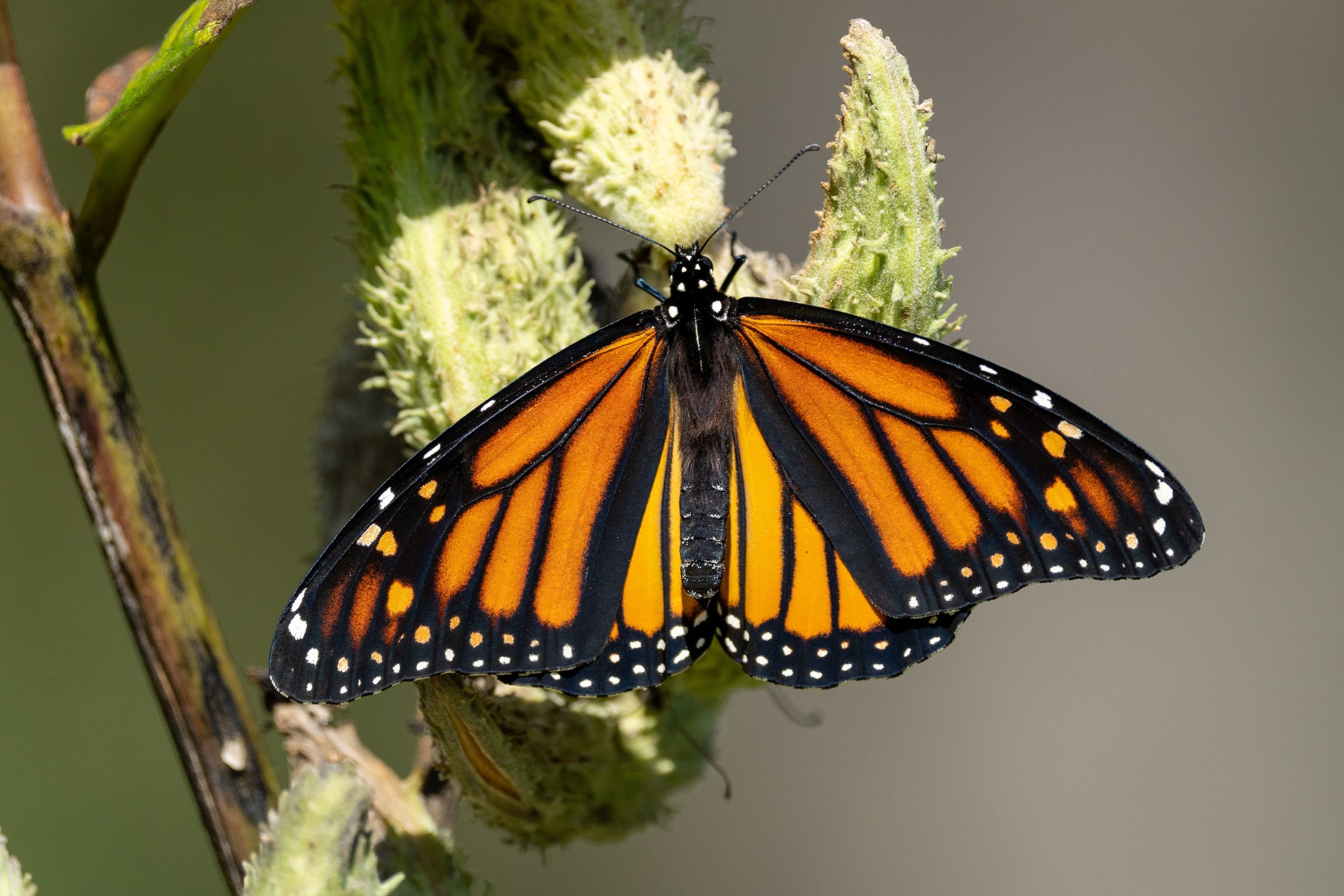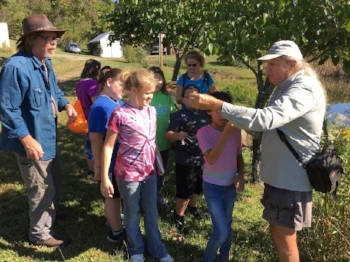

The Great Monarch Migration
Monarch tagging at our latitude begins August 29! They are about to embark on an incredible journey

A Week of Discovery
Thirteen kids joined BRDC at Matthews State Forest Pavilion for Discovery Day Camp.

Galax Middle School Explores Dunson Farm
On Saturday, September 24th, an enthusiastic group of Galax Middle School students visited Bill and Margaret Dunson’s Baywood farm just a few miles west of Galax. The Dunsons bought this farm with the intention of converting it from agricultural use to a wildlife resource, with improving bird habitat as the guiding principle. They have returned fields to a more natural sequence of seasonal grasses and wildflowers with an emphasis on native plants. A series of small ponds dot the landscape, some with fish and some without, to demonstrate the impact fish have on various aquatic insects and to illustrate the contrasts.